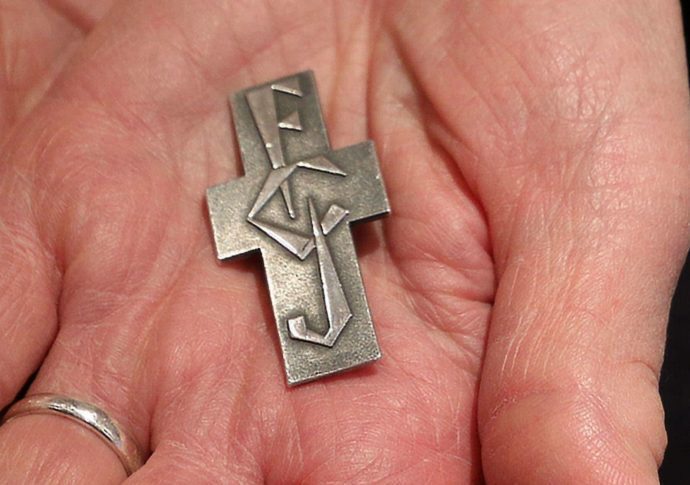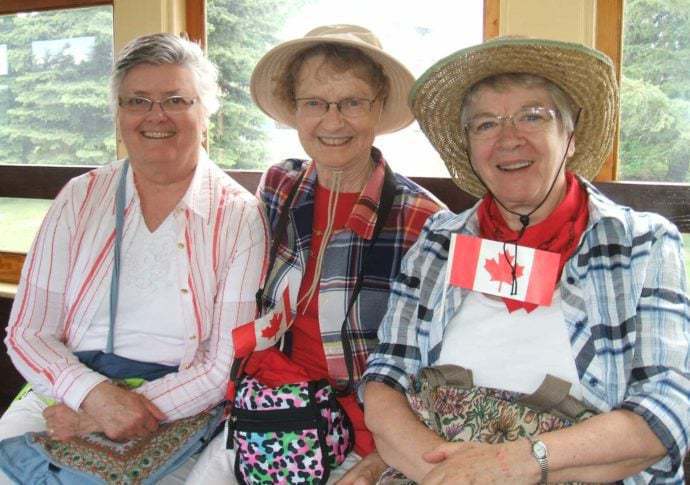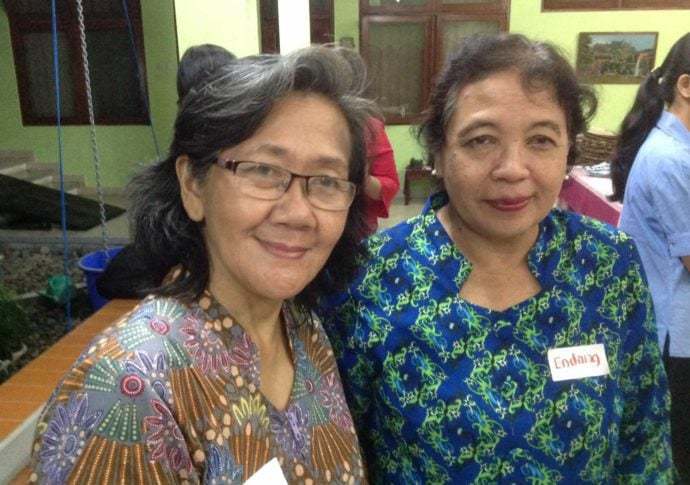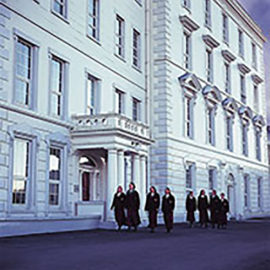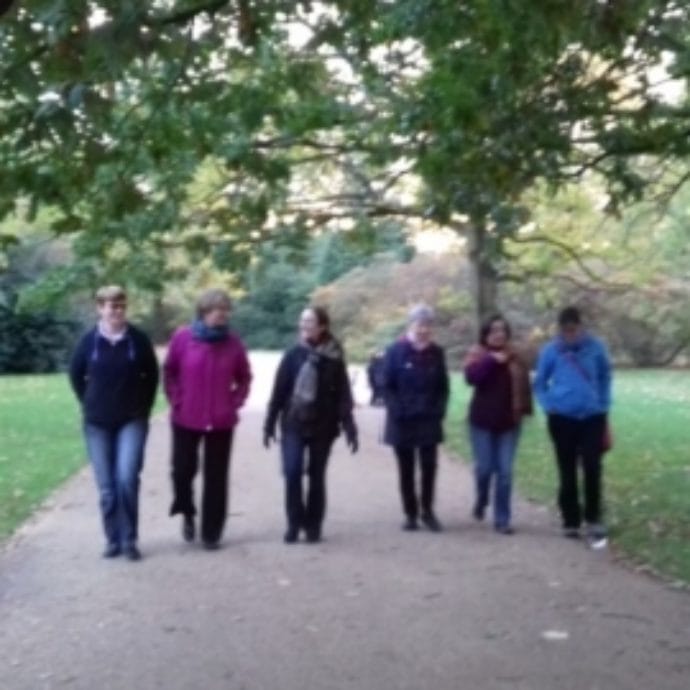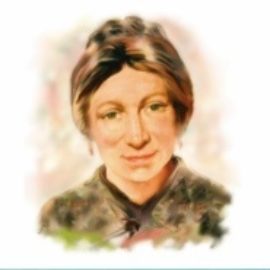Second Superior General, Josephine Petit
After Marie Madeleine’s death in 1858, Josephine Petit was elected Superior General. She died 30 years later, in January 1888, leaving a rich legacy to the Society. She had re-opened two houses in France, Bourges and Nantes, and set up five new houses in France, as well as eight in England, and one in Ireland. In the last decade of her life, she seemed to discover within herself a true missionary spirit, and had established a number of houses in Australia and Canada. She achieved this, in spite of lack of sufficient personnel, without denuding the communities in Europe.
FRANCE
1859: Bourges re-opened
1867: Reuil, near Paris
1871: Nantes re-opened
1875: Guérande, Brittany
1877: Veyrier, Haute Savoie
1884: Henriville, Amiens, Picardy
ENGLAND

1861: Preston, Lancashire
1862: Upton Hall, Merseyside
1865: Exeter, Devonshire
1866: Skipton, Yorkshire
1872: Middlesbrough, Teesside
1880: Redcar, Teesside
1881: Poplar, East London
1884: West Hartlepool, County Durham
IRELAND
1861: Newtownbarry, Wexford
AUSTRALIA
1882: Melbourne
CANADA
1883: St Laurent
1883: Prince Albert
1883: Brandon, Manitoba
1885: Calgary
1888: Edmonton

Third Superior General, Marie de Bussy
Marie de Bussy followed Joséphine Petit as Superior General, and in the six years of her leadership of the Society, 1881 – 1895, she brought to fruition projects foreseen and prepared for by her predecessor. These included the opening of four houses, one in Scotland and three in Western Canada. Marie also played an important part in the burgeoning ministry of the FCJs in Melbourne, Australia: in her time, a large property was purchased in the district of Kew in 1889 and a fine new school building was commissioned from a distinguished architect.

Foundations
1889, Paisley, Scotland
1891: Lethbridge, Canada
1892: Rat-Portage, Canada
1894: Saskatchewan, Canada
1894: Fond du Lac, Wisconsin, USA
Fourth Superior General, Zoé Girod
When Marie de Bussy died in 1895, she was replaced by Zoe Girod. Like her predecessors, Zoé’s desire was to respond to the needs of the time, and to encourage and facilitate the growth of the Society in accordance with its traditions. The FCJs were steadily increasing in number and had a well established reputation for apostolic effectiveness. Their major apostolates, education in boarding-schools, parish day schools and evening classes for women, together with the work of retreats and attending to the needs of the poor in workhouses, were in constant demand. The sisters, in going to Australia and Canada, had begun to undertake the missionary journeys that had always been part of Marie Madeleine’s vision, and Zoé wanted this broadening of the Society’s horizons to continue. In her years as Superior General, in spite of her anxieties and preoccupations concerning the volatile political situation in France (which necessitated moving sisters from some of the French houses to Belgium and Switzerland), she was instrumental in furthering the expansion of the Society in different parts of the world. Zoé died in January 1914, a few months before the beginning of the Great War.
Foundations

1896: Fitchburg, Massachusetts, USA
1901: Gilbertsville, Massachusetts, USA
1900: Benalla, Eastern Victoria, Australia
1902: Graty, Belgium
1903: Fribourg, Switzerland
1904: Brussels, Belgium
1904: Namur, Belgium
1904: Sedgley Park, Manchester, England
1908: Guernsey, Channel Islands
1909: Salzinnes, Belgium
1911: Hawthorn, Melbourne, Australia
1912: Cliftonville, Kent, England
1913: Broadstairs, Kent, England
1913: Jersey, Channel Islands
1910: Edmonton, Canada – St Anne’s

A Vignette by Sr Maria Grazia, from the Turin community – Life in Turin, Italy, during the time of Zoé Girod
Opening boxes which hold correspondence I was surprised by the hundreds of letters in French handwritten by one of our early General Superiors, Mère Zoé Girod to Mère Marianna Bogetti, superior of the Turin house in the first two decades of last Century. Names of mothers and sisters that I had the privilege to know and live with in my younger days came to life. One was particularly precious to Mère Zoé for her capacity to deal with business and bank affairs: Mère Hedwige, who was very devoted to Little Jesus of Prague, her banker. He really worked wonderful favours for this house through the devotion and fervent prayer of Mère Hedwige.
What touches me most is the loving relationship between Zoé and Marianna. The latter was a most loving person but very poor in business. Mère Hedwige was a great help to her. Letters were written every week or so and Mère Zoe would assure Mére Marianne that Mère Hedwige was able to deal very well with all the management of the big house which, at that time, had sales of part of the big property going on.
Mère Zoé counted on the secretarial writing of Mère Gasquet or Mère Adrienne and she herself would write some loving message at the end of letter, like “Tous mes maternels souvenirs et l’assurance de ma tendre affection” or “Mon expression de tendresse la plus affectueuse… Chère maison de Turin que le Bon Dieu aime et qu’Il veut bénir Lui-même”. “Take care of your health… we thank God for the several postulants for our Sisters… form well our Sisters, we need them for our houses.” In fact, several Italian sisters were sent to Camon, Nantes, Paris, Bruxelles, La Chassotte, etc. and, by their readiness and generosity to go wherever our Society was in need, they offered their joyful service and love in many parts of our Society. We own to them what we are today.
Read more about the history of the Faithful Companions of Jesus in Europe, North America and Australia.






